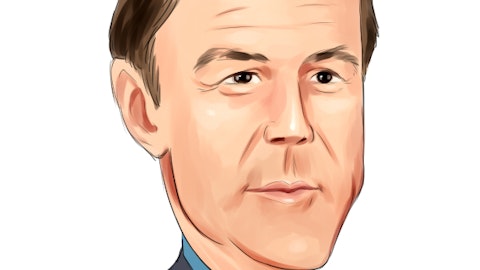
Earnings highlights
The company reported 22% year-over-year gains in consolidated revenue. The growth in revenue was primarily driven by growth in its institutional securities (investment banking) and investment management businesses. The institutional securities division generated 30% year-over-year growth in the second quarter. The investment-management segment reported a 48% year-over-year revenue increase. Performance in both segments contributed to the company’s earnings growth this past quarter.
Morgan Stanley (NYSE:MS) reported a 12% year-over-year increase to its operating expenses. The company’s costs increased at a slower rate than the growth in revenue, which resulted in 66% year-over-year groAwth in net income.
Morgan Stanley (NYSE:MS) reported diluted earnings per share of $0.45 in the second quarter, beating the analyst consensus estimate of $0.43. It beat earnings by $0.02, which isn’t bad when considering the high expectations analysts have had for the bank. The company grew diluted earnings per share by 41% (year-over-year) in the second quarter.
Outlook and investment thesis
The outlook remains fairly strong for the bank. Asset-management fees and investment banking activity are expected to grow in the foreseeable future. Analysts on a consensus basis anticipate the company to report earnings growth of 1,469% for the current fiscal year, and to follow that growth with 25.5% in 2014. The high rates of growth are due to the favorable macroeconomic environment paired with better cost management.
The performance of the bank is driven by whether or not stocks can continue to appreciate in value. If stocks are able to trend higher, this will have a favorable impact on both investment banks and asset-management firms.
Asset management flows

Source: Ycharts
Mutual fund flows have improved year-to-date. Mutual fund flows tend to peak towards the beginning of the year and taper off towards the end of the year (seasonal pattern).
Therefore, it is likely that the asset-management industry will experience year-over-year gains in performance fees for the third and fourth quarters, but will not experience a quarter-over-quarter gain in base fees. Base fee growth is different from incentive fees. The incentive fees should experience a boost because the broader stock market has been able to advance to new all-time highs. However the growth in base-fee income should taper on a quarter-over-quarter basis due to seasonal patterns.
Peer comparison of investment banking
Goldman Sachs Group Inc (NYSE:GS) and JPMorgan Chase & Co. (NYSE:JPM) were able to get a significant boost to their revenue this quarter. This was driven by the stock market. Total assets under management increased as equity inflows trended higher.
JPMorgan Chase & Co. (NYSE:JPM) fetched the most growth in investment-banking activities with 37% year-over-year revenue growth. Following that, Morgan Stanley (NYSE:MS) reported 30% year-over-year revenue growth from investment banking, and Goldman Sachs Group Inc (NYSE:GS) came in third with 29% year-over-year revenue growth from investment banking. All three firms reported fairly comparable performance from investment banking.
Demand for debt underwriting improved because interest rates were trending higher, so companies acted quickly to borrow money while interest rates were still cheap. Initial public offerings should be on the rise as companies will want to seek public offerings while stocks are trading at higher premiums.
Not to mention as a part of the JOBS Act (Jumpstart Our Business Startups Act), IPO requirements have lessened for smaller companies. This make the IPO process less expensive for small companies that want to publicly offer stock. This is another contributing factor that has helped to boost equity underwriting fees across the investment banks.




